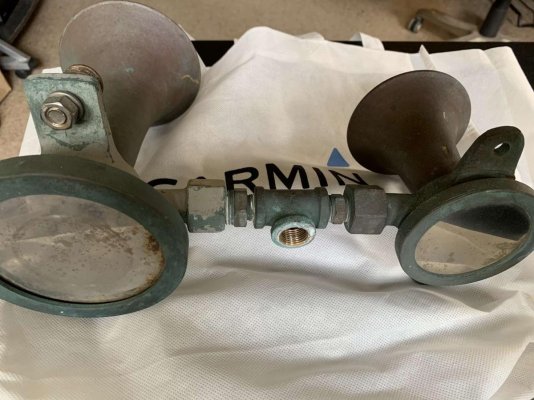JDCAVE
Guru
- Joined
- Apr 3, 2011
- Messages
- 2,907
- Location
- Canada
- Vessel Name
- Phoenix Hunter
- Vessel Make
- Kadey Krogen 42 (1985)
Not really, read Annex III more carefully and thoroughly. It defines fundamental frequency of 250-525hz, and the minimum sound levels of that and various harmonic frequencies in 1/3 octave bands,
Well, always willing to change my position based on evidence... furthermore, I think 1200 hz is higher than any horn I’ve heard...
...but at least in the Canadian Colregs, a search of the document does not return 525 hz anywhere in the document, I get the following:
“A whistle fitted in a vessel shall provide, in the direction of maximum intensity of the whistle and at a distance of 1 metre from it, a sound pressure level in at least one 1/3rd octave band within the range of frequencies 180-700 Hz (± 1%) for a vessel 20 metres or more in length, or 180-2100 Hz (± 1%) for a vessel less than 20 metres in length, of not less than the appropriate figure given in the table below.”
https://laws-lois.justice.gc.ca/PDF/C.R.C.,_c._1416.pdf
My vessel is less than 20 metres. Perhaps I’m missing something. These refs were up to date as of December 3, 2019.
Jim

